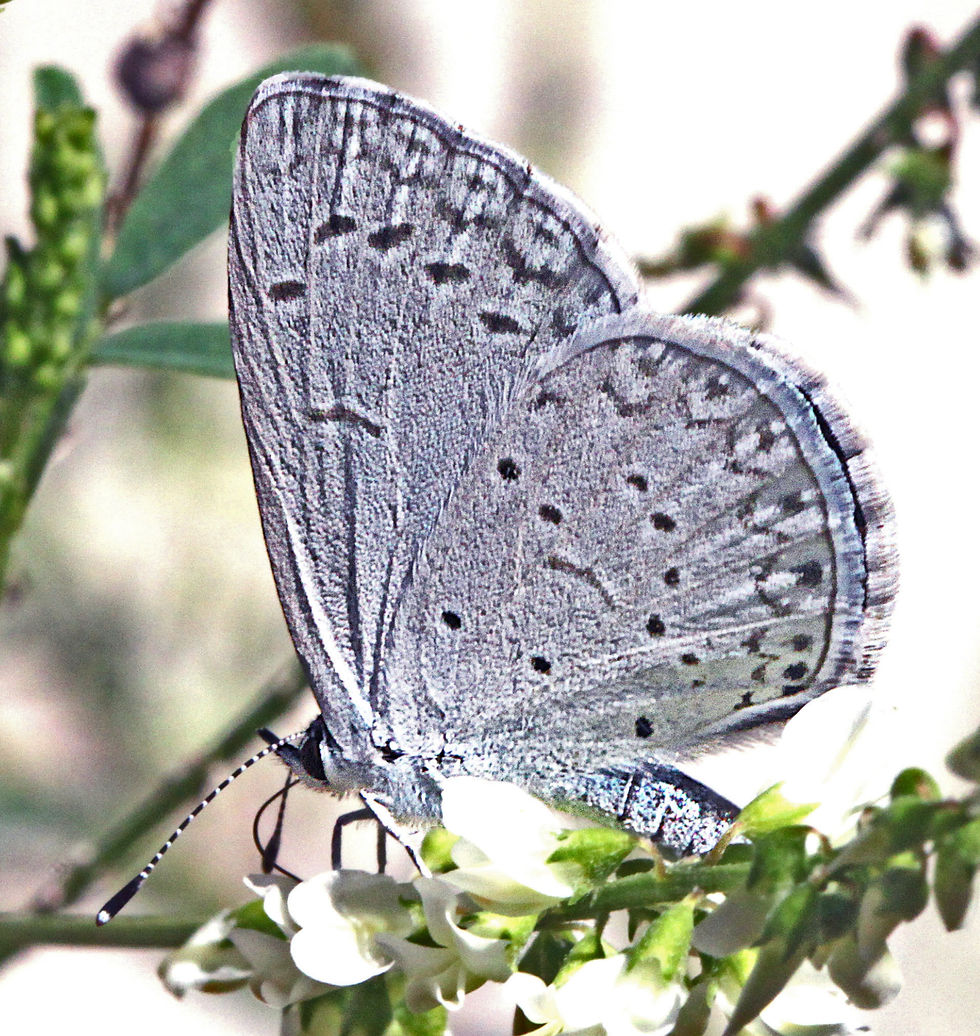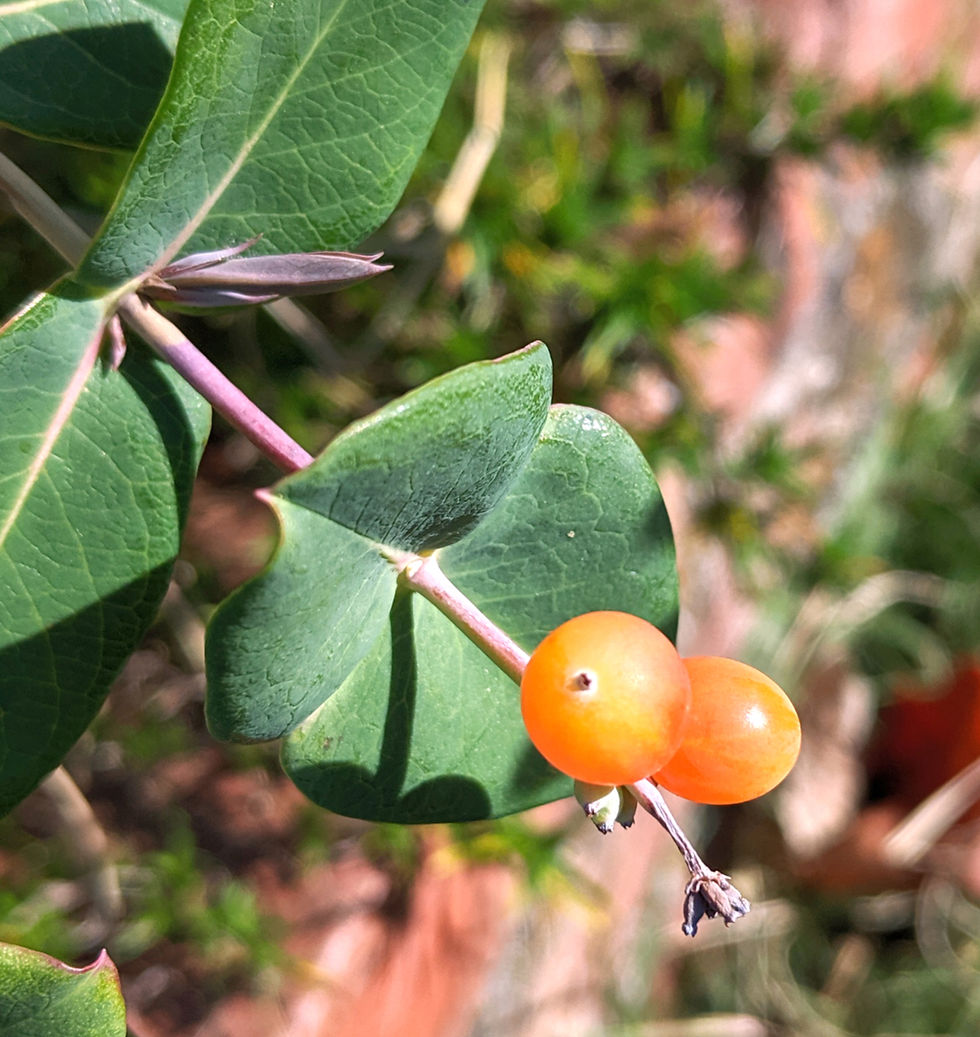trumpet honeysuckle—a can’t-miss native vine
- Garden-Green

- Jul 18
- 3 min read
Updated: Jul 29
Trumpet Honeysuckle (or Coral Honeysuckle), Lonicera sempervirens, is one of the most beautiful, long-blooming native vines in the Eastern U.S. And, even better, it’s well-behaved, so it’s perfect for any yard, big or small. It grows contentedly on an arbor, trellis, wall, or fence—or even as a ground cover. It even climbs up a trellis placed in a large galvanized steel stock tank (with holes drilled in the bottom and set on wheels for drainage).

Lush blooms of tubular reddish-orange flowers appear in spring, often coinciding with the first sightings of Ruby-Throated Hummingbirds returning from their winter homes, and bloom periodically throughout the summer into fall. The flowers have no fragrance, but the reddish-orange color attracts hummingbirds.

In the summer, birds also find protection and nesting sites in the tangled branches and leaves. And the leaves feed the caterpillars of the Spring Azure Butterfly and the Snowberry Clearwing Moth, while deer and rabbits tend to avoid munching on the them.


Only light trimming would ever be necessary to prevent the plant from going where you don’t want it. If needed, trim right after flowering—but not too much, because American Robins and other birds love the berries.*
Berries ripen in late summer to fall. Berry production in the straight species is enhanced by planting two. Good berry set for some cultivars may require getting another plant with different genetics, either a straight species or a different cultivar.

The word “honeysuckle” can strike fear into the heart of any gardener because of the devastating impacts of exotic invasive vine and shrub honeysuckle species that have spread uncontrollably and upset the balance of our native woodlands and edges. But Lonicera sempervirens is a native plant that supports our local ecology. Some native honeysuckle shrubs are also good choices for the garden, including Northern Bush Honeysuckle, Diervilla lonicera.

Add Trumpet Honeysuckle to your garden for the beautiful flowers, to attract birds and pollinators, and to provide nesting sites for birds.
Size: 10’–20’ high vine (depending on the structure)
Light: full sun (best for flowering)–part sun
Moisture: best in moist, rich, well-drained acidic to neutral soil (can tolerate some drought)
Bloom: reddish-orange flowers in mid-spring, with additional periods of bloom through summer to early fall
Propagation: from seed or cuttings
*Berries are loved by birds, but toxic to humans and pets.
Sources
Cullina, William. Native Trees, Shrubs, and Vines. A Guide to Using, Growing, and Propagating North American Woody Plants. The New England Wild Flower Society. Houghton Mifflin Company: New York. 2002.
Dirr, Michael A. Dirr’s Hardy Trees and Shrubs. An Illustrated Encyclopedia. Timber Press: Portland, Oregon. 1997.
Dirr, Michael A. Manual of Woody Landscape Plants. Stipes Publishing Company: Champaign, Illinois. 1990.
Hightshoe, Gary L., and Harlen D. Groe. North American Plantfile. A Visual Guide to Plant Selection—for Use in Landscape Design. McGraw-Hill: New York. 1998.
Weeks, Sally S and Harmon P. Weeks Jr. Shrubs and Woody Vines of Indiana and the Midwest. Purdue University Press: West Lafayette, Indiana. 2012.







Comments